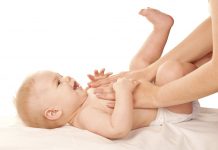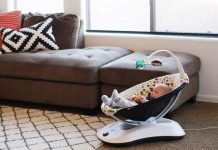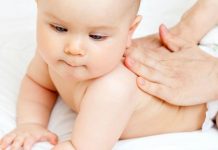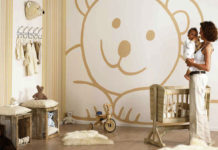The condition of eczema in infants is also known as atopic dermatitis and it usually appears at 2-6 months as an itchy and nasty rash. In the majority of the cases it starts on the face and it spreads to the neck, behind the ear, torso, legs and arms. It is also possible to see small pimples or papules that are filled with fluid.
What is the infant’s eczema?
The bad news is that these pimples or papules could burst and ooze, making the bothersome symptoms even worse. In the majority of the cases, the eczema clears up on its own until 18 months. As the babies grow, the symptoms become less and less severe.
Causes of baby’s eczema
One of the major risk factors in this case is having a family history of allergies, like hay fever, eczema and asthma. There are a lot of things that could trigger the eczema, making the skin irritated. If the baby rubs the eczema, it becomes even more serious and the area becomes vulnerable to other irritants and dryness.
The most common causes of eczema in infants include moisture, dust, heat, animal dander, scratchy fabrics, soaps and detergents and cigarette smoke. Naturally eczema can also be caused by food allergies to cow’s milk, citrus, chocolate, egg whites and nuts.
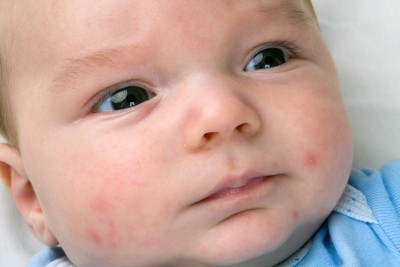
What could you do?
Unlike some other skin conditions that he or she could have, in case of eczema in babies there is need for action. Make sure to talk to your doctor about the best ways to treat the condition. It is possible that the doctor will prescribe creams that will stop the spreading of the rash.
In case of the eczema in infants, it is important to keep the little one sweat free and cool. This means that you will need thin blankets and lightweight clothing. It is also a good idea to eliminate nut products, cow’s milk, citrus and eggs from the diet of the baby.
When dressing the baby, to avoid eczema in infants, you shouldn’t use any scratchy fabrics. During baths, you should use lukewarm water and keep the baths short to protect the moisture of the baby’s skin. Try to avoid using soap or make sure that you use ultramild soap.
A gentle moisturizer could also help with children’s eczema. Apply this when the skin of the baby is still damp after a bath. Reapply it a bit later. It is also a good idea to have a cool-mist humidifier in the room of the baby, but don’t use a hot steam humidifier.
As you can see eczema in infants is something serious, but there is a lot that you could do to make things better for the baby.


